The content of the article
How to grow beets in open ground - many know. But someone does this for the first time. And he does not realize that there are certain tricks and secrets. They can make mistakes if they fail. But you can grow a wonderful crop without a greenhouse, just following some recommendations.
The most frequently asked questions are:
- land preparation
- seed treatment
- choosing a landing method
- care needs
- top dressing
- cleaning dates
Let's look at each of the items to get a first-class crop.
What kind of land do beets need
Loose and nutritious. Just not moored! Beets are very grateful for mineral fertilizing, overripe compost or green fertilizers. And it does not tolerate fresh manure. When it is introduced, the beets become clumsy, often sick and shoot.
Autumn preparation includes weeding, fertilizing and digging beds. Be sure to add chalk or lime. Beets really do not like acid soil.
It is possible to prepare the earth also in the spring. As soon as the snow melts, the soil is loosened. This will allow the weeds to rise earlier, and you - to get rid of them so that young plantings do not suffer.
A place for planting beets needs to be chosen sunny. She does not like shade. By the way, people say that beets grow better if the mistress’s hem sweeps it. That is, along the edges of other beds. But it’s better to give her a separate strip.
Immediately on the day of planting, the grooves are made with an improvised tool. A depth of about 5-7 cm. The bottom is sprinkled with ash. This is a good dose of potassium. Then gently spilled with water. Once it is absorbed, it can be planted.
Tip. Landing dates in each region are individual. Focus on the temperature of the earth. It should be above + 15 ° C.
How to plant beets
The depth of seed placement is about 3-4 cm. The distance between them is 8-11 cm. No more. Huge root crops are spectacular, but what will you do with such a firebrand? Cook for three days? Although, if you need for the exhibition, feel free to double the distance between the seeds.
Rows of landings can be arranged 20 cm apart. This is done for the convenience of primary weeding.
Get ready for the fact that the beets will have to be pulled. From one glomerulus grows 2, or even 3 plants. If this is not done, then you can forget about a good harvest.
Tip. Now breeding offers special varieties that do not require peeling. They are called monogermous. Look for information on a bag of seeds.
How to process beet seeds
If the seeds are simply put in the ground, then the seedlings appear only after 3 weeks. During this time, rains can pass, the soil will be covered with crust, and you can’t wait for seedlings at all.
In order for the beets to sprout in 4-5 days, the seeds must be pre-processed and germinated. To do this, they are soaked in a strong solution of potassium permanganate for 3 hours. This will kill pathogenic bacteria and spores. Further, without washing, the beet seeds are placed for a day in a solution of a biostimulant. The instructions can be found on the packaging. Be sure to ensure that the temperature of the liquid does not fall below + 20 ° C. Beetroot loves warmth.
At the end of the term, prepare a wide container. Clean sawdust, a cotton cloth, and paper napkins are laid at the bottom with a thin layer. Wet thoroughly with clean water. Do not pour, but moisturize! Processed beet seeds are poured on top and covered with glass or a transparent bag. Clean in a warm place.
On the second day you can check.Some seeds should already hatch. Almost all sprout on the third. Now you can plant.
Tip. Make sure that the substrate does not dry. If necessary, spray it with warm water.
Seeds or seedlings
Depending on what the beets are for, there are two types of planting.
- The seeds. The method is simple, allows you to get a guaranteed harvest without much effort. The downside is that it is not suitable for an early landing.
- Seedlings. The method is more troublesome, but it helps to get an early crop of root crops. Of the minuses: dancing with laying roots in the grooves, seedlings are very moody and painful. You can not guess with the weather, and then the survival rate will be very low.
Decide for yourself, what is more important for you - to eat one beetroot in July or to harvest a good harvest in the fall? Although, if you have rich experience, you can try. Now information about such experiments is full.
Tip. If the seedling method was chosen, then never tear off the central spine when diving. It is through him that the beets receive nutrition in the dry season.
What care is required for beets
Small beet plants are very weak, painful, weakly held in the ground. Therefore, they must be protected from all misfortunes:
- Attack of fleas. At the same time, small holes immediately form on tender leaves. Therefore, inspect beets in a timely manner, if necessary, dust them with ash or spray them with insecticides.
- Earthen crust. While the plants have not gained a good mass of leaves, they breathe roots. Therefore, it is necessary to periodically loosen the earth in the aisles. Only very carefully, do not damage the roots!
- Weeds. They grow much faster than beetroots and create an unnecessary shadow. Weed grass must be mercilessly destroyed until the leaves in the rows close. And there already the beets will cope on their own. She just won't let the grass grow.
- Return frosts. What to do if the weather forecast promised a cooling, and your seeds just got out into the light? No need to panic! We put temporary arcs, we throw a greenhouse film and wait for heat. In severe frosts, you can cover with a non-woven material.
This is the main concern until the beets are young. After the appearance of 6-8 of this sheet, you can moderate your ardor.
Tip. In order not to run around the beet beds, looking for an insidious weed, you can simply mulch it. This will prevent future growth of weeds and will allow moisture to remain in the ground even during the drought.
Do I need to fertilize beets
Beets are very responsive to top dressing, so do not neglect them. It is best to use foliar, that is, on the leaves. The most suitable is green fertilizer. Make it very easy.
Fresh nettles, dandelions, clover are stuffed into a plastic bucket to the top. In this case, it is desirable to grind everything with a secateurs. Or tear with your hands into pieces about 10 cm long. A handful of dry grass is placed on top and poured with water. Leave in the sun. Get ready for a stunning "flavor." Once a day, mix with a wooden stick. After 7-9 days, a wonderful fertilizer is ready.
It is diluted with clean water in a ratio of 1 to 10. And only then beet plants are watered. To spray on the leaves you need to breed 1 to 20. The result will be noticeable the next day. In total, 4 such top dressings are carried out per season.
They can be alternated with irrigation with salt water. For 10 liters of liquid 1 tsp. table salt. Amount of fertilizing with salt - 2 per season.
Speaking of watering. Beets can grow without them, but then it will be woody and bitter. At the same time, she does not like waterlogging. Root crops quickly become ill from excessive dampness. Therefore, it should be watered only when the earth is dry to a depth of 10 cm or more.
Somewhere a month before harvesting, all nutritional procedures and irrigation are stopped.Let the root crops grow stronger and accumulate their sweetness. If you continue to do this until the harvest, then the root crops will not be maroon, but red. Plus there will be light rings in the pulp.
Tip. If you are not a supporter of organic farming, then use mineral fertilizers. Their beets are also very fond of. Only without fanaticism! Strictly follow the instructions and do not exceed the dosage.
When and how to harvest beets
Exact dates depend on the variety. As a rule, cylindrical root crops ripen a month earlier than round ones. In general, it is customary to navigate through the leaves. Yellowing and wilting of 4-5 lower leaves serves as a signal for cleaning. But you still need to look at the weather. If in the near future the forecast conveys heavy rains or frosts, then it is better to remove beets a few days earlier. Than then bathe in cold mud.
How to clean? Need a pitchfork, gloves, burlap, secateurs. Gently root the roots with a pitchfork, being careful not to damage them. Shake off the ground and cut the tops with secateurs. Petioles leave about 2 cm. Then they are laid out on a burlap to dry in a barn or garage for 5 days.
Some simply spill onto the floor without bedding. In principle, it is possible. Just burlap allows you not to breed dirt.
Why for 5 days? Because during this time all the damage or sores, if they are on beets, will appear. Such root crops cannot be stored. But they can be processed into blanks for the winter.
After the final drying, the beets can be removed for winter storage. To do this, they spread it in wooden or plastic boxes, then put it in a cellar or basement. Temperature + 6-8 ° C, darkness and humidity of about 75% - ideal conditions for long-term storage of beets.
Some tips
- After pulling out the beetroots, do not throw away the plants. If there is a free piece of land, then you can try to plant them. Caring for such plants is no different from seeded plants. The processing is also the same. Perhaps you will harvest even the best crop.
- If you do not want to experiment or there is no free land, then discard the roots, and leave the young leaves. This is an excellent vitamin supplement in salads, borscht, okroshka.
- Water the beets by sprinkling. This way the sockets are refreshed and washed. There is no harm in this. After each watering the next morning or day, gently break the crust on the surface of the earth.
- There are recommendations about winter beet planting. Allegedly for an earlier harvest. But reviews speak of the inefficiency of this method. Semyon still will not rise before the earth warms up. What is the point of planting in advance in the winter, if you can manage to plant it in the warmed ground in the spring?
- If you need medium-sized root crops for preservation as a whole, then just do not pull out the beetroot plantings and often loosen the ground. Then they will be small, but fully formed.
- One of the features of beets is elevation above the ground. Some root crops stick out at 2/3 of their length. Do not frantically spud it and close it from the sun. Beets do not accumulate solanine and do not turn green. Let it stick out, admire.
- Feeding beets should begin when the root crop reaches the size of a quail egg. This should not be done before. The root system is too weak.
How to grow beets in open ground? As you can see, nothing complicated. Care, weeding, watering, fertilizers. And now a vinaigrette from their own harvest, and not purchased.
Video: the subtleties of planting beets in the open ground

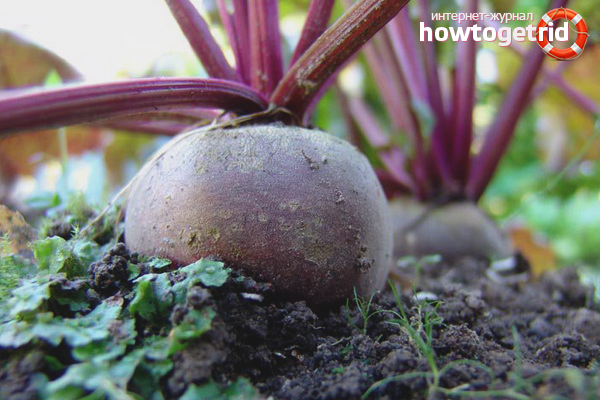
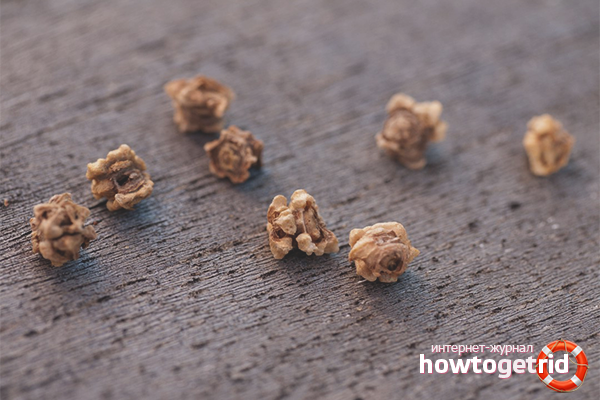



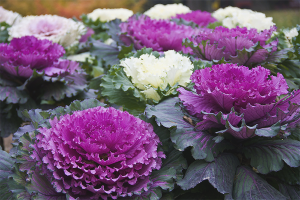
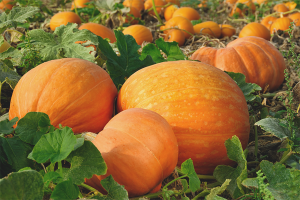
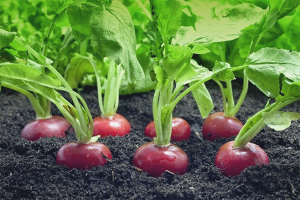

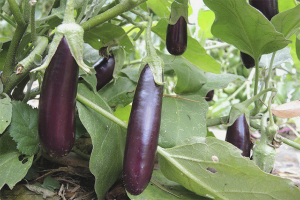
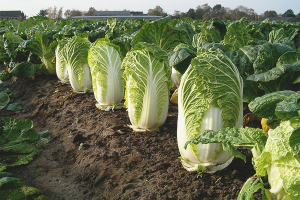

Submit